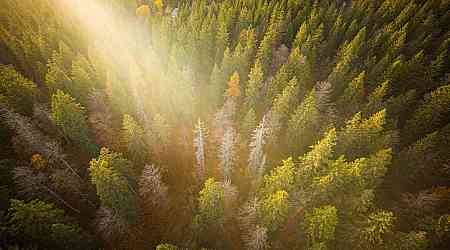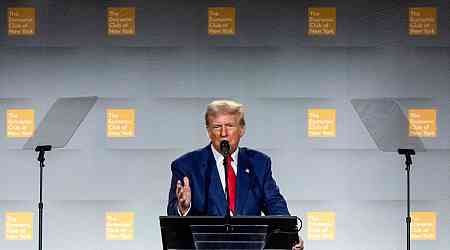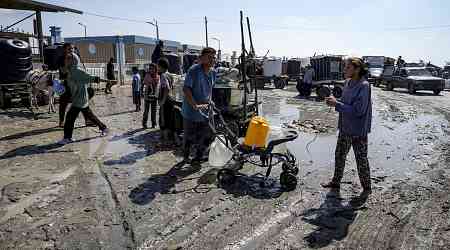
“They are like Saudi Arabia,” James Gentizon said. “They have plenty of energy.”
Gentizon, a Swiss engineer and entrepreneur, wasn’t talking to us about a new oil field in the Middle East or the Americas. No, he was talking about Rossinière, a small, Swiss, Alpine town in the canton of Vaud.
At first sight, though, Rossinière looks nothing like Saudi Arabia. It’s one of those typical picturesque Swiss towns surrounded by mountains, reachable only by a small road or train. Geographically, it’s about halfway as the crow flies between Montreux at the shores of Lake Geneva, and that most famous of all Swiss towns: Gruyère, known for its delicious cheese.
[time-brightcove not-tgx=”true”]So, what had Gentizon so excited about Rossinière, then? As it turned out, it was wood. “There is 1,000 hectares of wood,” he said, pointing to the forests all around the town center. That wood, he said, could the town’s answer to the two wicked problems facing its people—and those around the world: human-made climate change, caused by the burning of fossil fuels, and the decline of democracy, caused by all kinds of forces, including the concentration of economic power in the hands of just a few individuals and companies. In Rossinière, the abundant presence of wood could solve these challenges on a micro-scale. And if his project succeeded there, it could quite likely succeed almost anywhere in the world, he believed.
The new nature of business can be almost the opposite of the old nature of business. It can promote broad prosperity, rather than devolve into a game of winner-takes-all. It can truly act in balance with nature from the get-go, rather than operate in a parallel reality. And it can use technology to the benefit of humankind, rather than in one company’s narrow self-interest, which often is at odds with that of society.
Gentizon, you could say, worships the sun, though he does so in a rational, not religious, way. To the engineer, the burning star at the heart of our solar system is the alpha and omega of our energy equation. It is the key also, he believes, in our fight against climate change. And, the sun is fundamentally a public good to which no one has a monopoly. “It may seem like there is a lack of energy,” he told us. “But the first energy is the sun. Its energy is everywhere. The planet, it is only energy.”
As said, Gentizon is not religious in his worship. He is deliberate and scientific: when you observe energy in its purest form, you just realize it all starts with the sun. Consider the heat that makes up thermal energy: it comes from the sun. It is this energy that makes plants, trees, and vegetables grow, and that fuels us as people. Nature transforms heat into chemical energy in living beings, or in hydrocarbons, fossilized over hundreds of millions of years. But its origin is still the sun. So it goes for other types of energy. Geothermal energy, mechanical energy, or gravitational energy—none of them would be around in the first place if it wasn’t for the sun and the earth.
There is a point to starting Gentizon’s story with these solar considerations. Two, in fact. The first is that in this reading, a fundamental feature of energy is that it doesn’t belong to any one particular person or company. Like the sun itself, energy is the ultimate global common. It’s a far cry from how energy is owned and traded in our global economy, with just a handful of companies and countries dominating our current supply of energy. The second point is that solving the challenges posed by our current energy system isn’t all that complicated, if you start from a perspective of energy abundance. If energy is everywhere, in all kinds of forms, you just need to pick the extract right form of it, if you want it to benefit all.
It’s a radical perspective, to be sure, but Gentizon’s approach to sustainable and inclusive prosperity isn’t a pipe dream. It is already underway in Switzerland. To see how it works, let’s return to Rossinière.
In Rossinière, a sparsely populated, but vast mountain town, people have been living with nature since time immemorial. Located at almost 1,000 meters, or about 3,000 feet above sea level, the forces of nature are omnipresent in Rossinière. Snow covers the town for much of winter—although less so in recent years—and the mountain pass that connects Rossinière to Montreux’s Lake Geneva takes a wide bend around the Alpine Mountain peaks that enclose the town. But nature doesn’t just present challenges here; it offers opportunities, too. Most houses in Rossinière are made of wood, sourced locally from the forests that surround the town. They are so sturdy, and so beautifully built, that they are today a tourist attraction, giving visitors a taste of idyllic Swiss living. The very woods that made Rossinière so inaccessible for centuries, thus also made it possible for people to live and visit the place today.
Yet like elsewhere, the town and its people over the course of the 20th century tapped into the “lazy” source of energy provided by fossil fuels. In Switzerland as a whole, petroleum, motor fuels, and gas make up more than two-thirds of energy consumption at present, and they are all imported, mostly from Nigeria, the U.S., and Libya, the Swiss Federal Office of Energy disclosed. Rossinière is no exception in its dependence on foreign fossil fuels, and its contributions to the CO2 emissions that come with it. But it needn’t be that way, Gentizon realized. It is at this point that he made the comparison with Saudi Arabia in our conversation, pointing to the town’s plentiful supply of wood. With modern techniques, the town could be almost fully self-sufficient in filling its energy needs with that wood. The right energy infrastructure would enable Rossinière to collect wood from its forests, pyrolyze it to produce thermal energy and electricity, supply its people with district heating, and provide electricity to the grid.
The benefits of such an approach would be countless, Gentizon said. First, and most important, it would make the town largely net-zero in terms of its carbon emissions. Cutting trees and turning the wood into gas would emit carbon of course, but as new trees would be planted each year for the ones that were cut, the forest of Rossinière would be able to recapture the released CO2, creating a circular energy system. Just as important, though, would be that the energy system would be fully homegrown, creating local jobs, and ensuring supply at preset prices. Between 60% and 80% of the town’s energy needs could be supplied locally, Gentizon estimated, with the remainder taken care of by the “backbone of the Swiss energy system,” including its nuclear and hydro power. Finally, in Gentizon’s plans, the energy company delivering this energy would be almost entirely locally owned, by the town’s people and government. That in turn would create a financial prosperity loop, in which the benefits of the town’s energy production go back to the town and its people.
This vision is now becoming reality. In 2022, the municipal council of Rossinière approved to act as guarantor for the energy plant proposed by Gentizon, to the tune of over 10 million Swiss francs ($11 million). A few months later, André Hoffman stepped in as investor in Gentizon’s Innergia Group, the company that would create the energy infrastructure of Rossinière and other towns that choose for its solutions. With the financing secured, the building blocks of Rossinière’s future energy system are now in place. In the next phase, the town will organize a referendum, and ask its citizens if they approve of the plans. In the proposed setup, the municipal government and a private citizens’ cooperative would together control 98% of the local energy company. The last 2% would be owned by a privately held company set up by Gentizon, which in turn would make a services agreement with Innergia. It would allow the latter to earn back the initial investments it makes in the project and give it the means to finance and organize daily operations for a duration of 20 years.
Innergia’s initial energy project in Rossinière, as well as a similar one in another Swiss town, won’t revolutionize the Swiss, let alone global, energy market, on their own. But the principles that guide the new company are groundbreaking, which is why we support them. The most important element of projects such as Innergia’s is that they make energy production and consumption sustainable. The various carbon capture techniques used in Rossinière would reduce the carbon footprint of the town’s energy production by 99.99%, according to Gentizon’s calculations. Moreover, by creating a tight link between production and consumption, these projects ensure local ownership and prosperity. Yet unlike some energy systems of the past, or those in certain countries, the setup in Rossinière is still liberal and capitalist in nature. A large part of the energy production would go to a municipal system of district heating, but the electricity that is produced would go on to the national grid, with its variety of suppliers and buyers. And although the community controls most shares in the company, technically, 51% of shares does nominally remain in private hands (albeit with a public benefit).
It is not hard to contrast this approach to energy with the one we currently have. In the U.S. and Europe, for starters, five historical “super-majors” dominate the oil and gas sector. BP, Chevron, ExxonMobil, Shell and TotalEnergies in 2023 had combined revenues of over $1.2 trillion, Statista data show, which makes them among the largest companies in the world. In 2022, a bumper year for oil and gas, they rewarded their shareholders with dividends and share buybacks of more than $100 billion, the Institute for Energy Economics and Financial Analysis calculated. Elsewhere in the world, the energy sector is equally consolidated, with state-controlled companies such as Saudi Arabia’s Aramco , China National Petroleum , Brazil’s Petrobras, and the United Arab Emirates’ ADNOC similarly among the largest and most profitable energy companies. Together, these and other major oil and gas companies are responsible for the lion’s share of global carbon emissions of the past 100 or more years. And although many of them are today partially publicly listed, the profits these companies make still only benefit a small part of the global population, considering that the harm on which these profits are based affects the entirety of the planet.
For our global economic system to be sustainable and inclusive, we need more companies like Innergia, and fewer companies set up like the super-majors. Energy should be treated and traded more like a global common than like a privatized good with mainly financial features. And it should be handled with care, especially when it comes to its net carbon footprint. We need the planet to provide resources for many generations to come. Digging up and burning fossil fuels without compensating for their CO2 footprint doesn’t fit in that picture. For all these reasons, we should use more of the business design principles of Innergia and stop providing operating licenses to companies that have the exact opposite approach.
It opens a whole new world of business opportunities for companies, new and established. It is worthwhile—even necessary—for others to pursue those opportunities, too.
Adapted with permission from the publisher, Wiley, from ‘The New Nature of Business: The Path to Prosperity and Sustainability’ by André Hoffman and Peter Vanham. Copyright © 2024 by André Hoffmann and Peter Vanham. All rights reserved. This book is available wherever books and eBooks are sold.

























